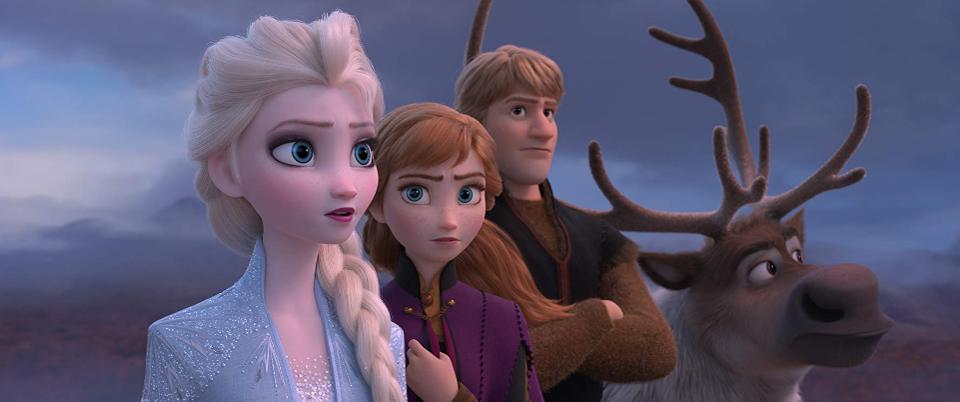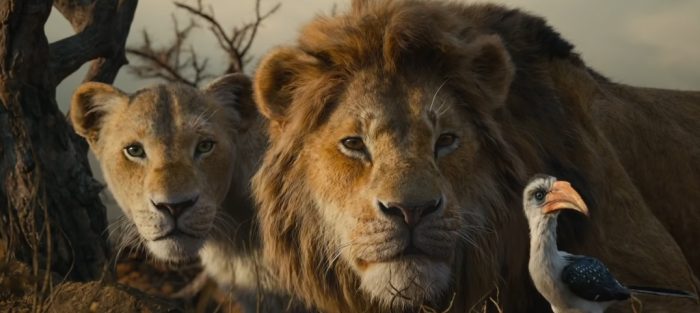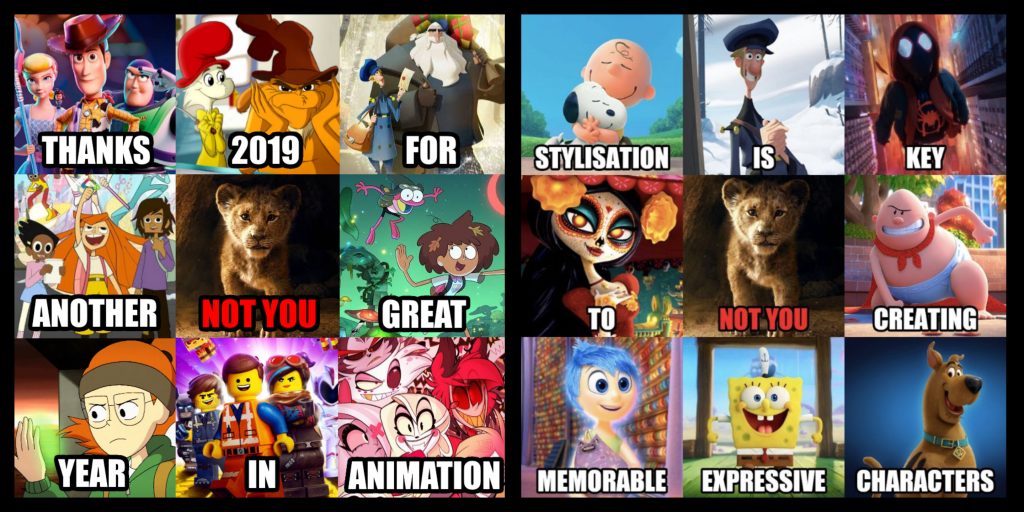
In early January 2020, Variety reported that Walt Disney’s feature film Frozen II (Jennifer Lee & Chris Buck, 2019) was now “officially the highest-grossing animated movie in history” (Rubin, 2020). In what was emphatically described as a “box-office achievement fit for royalty,” Rebecca Rubin declared: “The sequel has generated $1.325 billion at the global box office, pushing past Frozen ($1.281 million) and Incredibles 2 ($1.243 million) to secure the top spot.” Many other news outlets staked similar claims, identifying not only how Frozen II had achieved the biggest opening weekend for an animated film during its initial theatrical release – earning $358 million (£277 million) in its first three days in 37 countries including the US, China, and the UK – but that the sequel had surpassed the original’s impressive box office business to become the top-grossing animated film of all time.

Soon after the announcement was made, however, several commenters began to query Frozen II’s newly-crowned place atop to proverbial animation pile. Cartoon Brew’s Amid Amidi, for example, almost immediately challenged the film’s position as front-runner only a day after Rubin’s article, and the same day that the Disney studio themselves issued a press release in which they reiterated the party line that “the Walt Disney Animation Studios film broke the record previously set by its predecessor, Frozen, which earned $1.281 billion in its 2013 release.” By way of a riposte, Amidi (2020) argued that “Frozen II is still $330 million shy of the animated feature that currently holds the all-time record: the 2019 remake of The Lion King.” Indeed, despite its production entirely through computer graphics and with pristine levels of digital illusionism, Disney’s reimagining of its cel-animated musical The Lion King (Roger Allers & Rob Minkoff, 1994) was, in fact, continually framed as not animation. Rubin’s original Variety piece had already gestured to this strange (mis)labeling, noting: “Though Jon Favreau’s remake of The Lion King is entirely computer generated and earned $1.65 billion in 2019, Disney considers it a live-action reboot rather than an animated flick” (Rubin, 2020). However, fast forward to the recent Academy Award nominations – made a little over a week after Frozen II’s ascension as the supposed cream of the crop – and the already-muddy waters become even more opaque. The announcement that The Lion King had been nominated in the Best Visual Effects category – rather than being submitted by Disney for Best Animated Feature – seems to secure an industrial narrative of product differentiation that supports Disney’s anti-animation agenda for the film. Yet, when you consider that the Hollywood Foreign Press Association saw otherwise, nominating The Lion King (alongside Frozen II and Toy Story 4 [Josh Cooley, 2019]) for the Best Animated Feature Golden Globe, something doesn’t quite sit right.
A three-dimensional computer-animated film, Frozen II was produced as the 58th entry into Walt Disney’s Feature Animation canon, and the last in a decade that has seen the studio release eight other animated features under the WDAS banner: Tangled (Nathan Greno & Byron Howard, 2010), Winnie the Pooh (Stephen J. Anderson & Don Hall, 2011), Wreck-It Ralph (Rich Moore, 2012), Frozen (Chis Buck & Jennifer Lee, 2013), Big Hero 6 (Don Hall & Chris Williams, 2014), Zootopia (Byron Howard & Rich Moore, 2016), Moana (Ron Clements & John Musker, 2016), and Ralph Breaks the Internet (Phil Johnston & Rich Moore, 2018). Aside from Winnie the Pooh (that is cel-animated, but bookended by live-action sequences), all are computer-animated films that are relatively generic and stable in their digital aesthetic. By comparison, The Lion King was made by the studio’s live-action division Walt Disney Pictures, and strongly positioned as a continuation of its recent cycle of live-action remakes, which includes Maleficent (Robert Stromberg, 2014), Cinderella (Kenneth Branagh, 2015), The Jungle Book (John Favreau, 2016), Beauty and the Beast (Bill Condon, 2017), Dumbo (Tim Burton, 2019), and Aladdin (Guy Ritchie, 2019). Pre-release promotional footage of The Lion King’s ‘making of’ ardently sought to emphasize the corporeality of its performances (and Favreau’s hands-on direction ‘on set’). Another hot topic within these marketing strategies was The Lion King’s innovative production pipeline, which used virtual reality to assimilate traditional live-action storytelling techniques into a digital environment, as well as leaning on videogame technologies (see below). Despite this rhetoric, Favreau’s film ultimately has more in common with the digital production of Frozen II. Its use of digital world-building as part of its ‘live’ VR production positions the film closer to Frozen than to Disney’s other live-action remakes that, as has been well-documented, contain a substantial use of digital imagery and, crucially, post-production effects (see the blue/green screen and motion-capture technologies used for the earlier ‘live-action’ The Jungle Book, also directed by Favreau).
Despite the striking digital constitution of these ‘live-action’ remakes of Disney’s canonical animated ‘Classics’, The Lion King has undoubtedly rewritten the rules of the game. Right from the start, Disney was reticent to label the film animated at all, with a clear marginalizing of ‘animation’ or ‘animated’ from the language of its promotion. Favreau was symptomatic of this pervasive narrative of occlusion, stating that “To say it’s animated I think is misleading as far as what the expectations might be. And it also changes the way you sit and watch it” (quoted in Pearson, 2019). In an earlier piece published to coincide with the release of The Lion King’s first teaser trailer, Amidi even accused Disney (and Favreau) of “gaslighting” audiences in its misleading reorientation of the remake as a live-action feature, one that “denigrates the contributions of hundreds of underpaid animators and digital artists who worked their asses off to create the film’s animation” (Amidi, 2019). It seems, then, that The Lion King has the distinction of being a film in which its sophisticated developments in animated technology – from VR and tracking systems to its broader treatment of the virtual backlot – have the paradoxical effect of helping to secure its identity as more live-action.
This Disney-sanctioned and industrial sidelining of The Lion King, which ultimately precipitated the critical framing of Frozen II as animation’s box-office high point, finds an unlikely parallel in a recent social media meme that has equally addressed the kind of tacit or implicit contract that networks together critics, audiences, industry and digital aesthetics). The ‘Animated Movies can be Art’ meme (Figure 3) celebrates animation’s scope and versatility as a creative medium at the same time as it ridicules a particular feature – in this case, Sony Pictures Animation’s The Emoji Movie (Tony Leondis, 2017) – for its animation style that supposedly runs counter to the medium’s potential as a “beautiful art form.” There are certainly alternate factors at play here in the targeting of The Emoji Movie as fair game for the merciless meme treatment and its identification as not the ‘right’ application of digital animation. But what this ‘Not You’ cultural marshaling of expressive animated styles tells us – when coupled with the Frozen II/The Lion King conundrum – is the pleasure we take in anomalies, inconsistencies, and irregularities when confronted with commercial animation. Sometimes this joy of digital experimentation is good (The LEGO Movie [Chris Miller & Phil Lord, 2014] or Spider-Man: Into the Spider-Verse [Bob Persichetti, Peter Ramsey & Rodney Rothman, 2018]), bad (The Emoji Movie), or even downright perverse (Cats [Tom Hooper, 2019]). But as Vivian Sobchack wrote back in 2006 in response to the ambivalent critical reception of the uncanny digital hyperrealism in Final Fantasy: The Spirits Within (Hironobu Sakaguchi, 2001), “What do we want from animation?” (Sobchack, 2006: 172). She asks the question “Why is the underlying urge in the history of animation, particularly computer graphic animation, towards photorealism?” (Sobchack, 2006: 171). As the reception of Frozen II (and its supplanting of The Lion King as #1) perhaps indicates, the “rhetorical lure” of a three-dimensional computer-animated film is that it looks a certain way. And when it doesn’t, or when the challenge of experimentation and expressivity is accepted by the industry, we want it to look more like the comic book explosion of Spider-Man: Into the Spider-Verse than the extreme photorealist detailing of The Lion King.

All the foregoing suggests that ‘live-action’ has emerged with greater force as a dirty word for animation (particularly in a digital era that can sophisticatedly simulate it), one that now more than ever denotes a specific aesthetic style as much as a discrete mode of production. In The Language of New Media, Lev Manovich described how the achievement of photorealism constituted the “main goal of research in the field of computer graphics” (Manovich, 2001: 199). The sheer number of terms used to describe computer animation’s overwhelming realist agenda, ranging from “remediation” (Bolter and Grusin, 1999) to “second-order realism” (Darley, 2000), secures computer-animated films as the sum of, or reconciliation between, competing approaches and influences. Such nomenclature also suggests how live-action cinema has been shaped to be a hermetically-sealed or “consummated” form ready for consumption and re-appropriation by another visual art (Lamarre, 2006: 140). In these terms, then, the 2019 The Lion King is a live-action remake because it remakes (or ‘remediates’) live-action cinema in its visual style, adopting a photorealist aesthetic that seeks to represent the distortions, fragilities and features of lens-based media. The Lion King does more than remake the narrative content of the cel-animated original, it remakes a medium (a different one to the cartoon, but hey…). The Lion King is a live-action feature because it looks like one, and that is good enough. Not for some audiences, however, as subsequent iterations of the ‘Not You’ meme have since appeared that directly cite Favreau’s animated-but-actually-not-animated-but-really-animated The Lion King as proof of its negation of the expressive stylization afforded by animated aesthetics (Figure 4).

Like Anna, Princess of Arendelle – whose magic-induced forgetfulness towards Elsa’s powers in the original Frozen is intended to salvage her relationship with her sister – The Lion King forgets its identity as a computer-animated film and is quick to occlude or marginalize the very methods of its photorealist accomplishments. Yet Frozen II retains all knowledge of its special powers of animation, its memory in full working order as it proudly wears its animated identity on its sleeve. In these terms, the ‘amnesiac’ The Lion King (Anna) and the more ‘alert’ Frozen II (Elsa) – as well as their industrial and cultural framing and reframing as animated or not (spoiler: they are) – play out a series of points relating to the spectators’ enjoyment of photorealist animation in the digital age:
- a complex network of master-pupil relations exists between live-action and (digital) animation;
- photorealism and the replication of lens-based media have paradoxically emerged as an increasingly valuable barometer of ‘animatedness’ in a post-photographic era of seamless simulation…
- …which is strange as it is a term that necessarily starts from live-action and works outwards/backwards, rather than privileging animation (a nice evocation of film history that typically has the live-action tail wag the animated dog);
- the uncanny valley (a theory of spectatorship that historically deals with a kind of audience disengagement with – and feeling eeriness towards – pictorial realism) was never really a valley at all, but instead numerous faultlines, fractures, and fissures in spectatorship that can both regulate and upturn an audience’s shifting animated expectations.
The recent news that Disney’s cel-animated Bambi (David Hand, 1940) is next up to receive the ‘live-action’ treatment – with IGN reporting the film “will use CG animation to create a photorealistic style, even if it’s not technically a “live-action” movie – suggests the interrelationship between animation and live-action principles will continue to become further knotted. Yet, the recent celebration of Frozen II as the top-grossing animated film of all time is ultimately more than just evidence of Disney’s insidious management of its animated products in a devious act of “gaslighting.” Rather, it is convincing proof of how computer-animated aesthetics continue to be understood as more satisfactory when divorced from the dominance of live-action allegiance and association. When it comes to understanding digital verisimilitude, there remains a degree of unwillingness to accept the adoption of a particular kind of live-action style, especially if, like Frozen’s Anna, this means the film ultimately ‘forgets’ about the magic.
References
Amidi, Amid (2019). “Don’t Let Disney Gaslight You: The Lion King Remake Is an Animated Film. Here’s The First Teaser,” Cartoon Brew (November 22), available at: https://www.cartoonbrew.com/feature-film/dont-let-disney-gaslight-you-the-lion-king-is-an-animated-film-heres-the-teaser-166897.html.
Amidi, Amid (2020). “Don’t Believe Everything You Read: Frozen 2 Has NOT Become The Highest-Grossing Animated Film Of All-Time,” Cartoon Brew (January 6), available at: https://www.cartoonbrew.com/ideas-commentary/dont-believe-everything-you-read-frozen-2-has-not-become-the-highest-grossing-animated-film-of-all-time-184457.html.
Bolter Jay David, and Richard Grusin (1999). Remediation: Understanding New Media (Cambridge: The MIT Press).
Darley, Andrew (2000). Visual Digital Culture: Surface Play and Spectacle in New Media Genres (London and New York: Routledge).
Lamarre, Thomas (2006). “New Media Worlds.” In: Animated Worlds, ed. Suzanne Buchan (Bloomington: Indiana University Press), 131-150.
Manovich, Lev (2001). The Language of New Media (Cambridge: The MIT Press).
Pearson, Ben (2019). “Should The Lion King Remake Be Called an Animated Movie? Jon Favreau Says No,” Slashfilm (May 30), available at: https://www.slashfilm.com/the-lion-king-remake-animated/.
Rubin, Rebecca (2020). “Frozen 2 Is Now the Highest-Grossing Animated Movie Ever,” Variety (January 5), available at: https://variety.com/2020/film/box-office/frozen-2-biggest-animated-movie-ever-disney-box-office-1203456758/.
Sobchack, Vivian (2006). “Final Fantasies: Computer Graphic Animation and the (Dis)Illusion of Life,” in Animated Worlds, ed. Suzanne Buchan, 171-182.
Christopher Holliday teaches Film Studies and Liberal Arts at King’s College London specializing in Hollywood cinema, animation history, and contemporary digital media. He has published several book chapters and articles on digital technology and computer animation, including work in Animation Practice, Process & Production and animation: an interdisciplinary journal (where he is also Associate Editor). He is the author of The Computer-Animated Film: Industry, Style and Genre (Edinburgh University Press, 2018), and co-editor of Fantasy/Animation: Connections Between Media, Mediums and Genres (Routledge, 2018) that examines the historical, cultural and theoretical points of intersection between fantasy and animation. He is currently co-editing Snow White and the Seven Dwarfs: New Perspectives on Production, Reception, Legacy for Bloomsbury’s ‘Animation: Key Films/Filmmakers’ series, and can also be found as the co-founder and curator of fantasy-animation.org.

3D, Vfx animation services